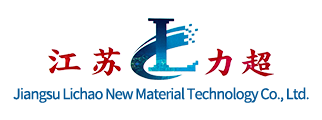
Where is the long-term economy of stainless steel strip reflected
source:www.sikali.com.cn | Release time:2025年10月21日1. Long service life: reduce frequent replacement costs
The corrosion resistance of stainless steel strips directly extends the product's service life and reduces the cost of repeated procurement and replacement from the root:
Strong resistance to environmental erosion: containing alloy elements such as chromium and nickel, forming a stable passivation film on the surface, not easy to rust in harsh environments such as humidity, acid and alkali, outdoor, etc. The service life can reach 3-5 times that of ordinary carbon steel (such as stainless steel strips for outdoor decoration can be used for 15-20 years, while ordinary carbon steel can only be used for 3-5 years).
Wide tolerance range for working conditions: high temperature (such as 304 stainless steel can withstand temperatures below 800 ℃), stable performance in low temperature environments, not easily brittle or deformed due to temperature changes, no need for frequent replacement due to working conditions, especially suitable for industrial equipment that operates continuously for a long time (such as conveyor belts and heat exchangers).
2. Low maintenance cost: reduce post maintenance investment
The material characteristics of stainless steel strips significantly reduce maintenance costs such as cleaning and repairing during use, saving manpower and material expenses
Easy to clean and no need for rust prevention treatment: The surface is smooth and not easy to adhere to dirt. Daily cleaning only requires water or simple detergent, without the need for regular painting and rust removal like carbon steel (the annual rust prevention maintenance cost for carbon steel is about 10% -15% of the material cost, and stainless steel strip is almost zero).
Low frequency of fault maintenance: Stable mechanical properties, less prone to cracking, corrosion, perforation and other problems during long-term use, reducing equipment downtime losses caused by maintenance (such as stainless steel belts used in industrial conveyors, with an average annual maintenance frequency of only 1/5 of carbon steel belts).
3. High material utilization and adaptability: reducing processing and waste costs
The shape and processing characteristics of stainless steel strip can reduce material waste in the production process, and adapt to multi scenario reuse, indirectly improving economy:
The coil shape reduces processing waste: the length and width can be cut according to demand, and the material utilization rate can reach over 95% (far exceeding 80% -85% of carbon steel sheet cutting), especially suitable for standardized products in mass production (such as household electrical components and hardware).
Strong multi scenario reusability: Even after elimination, it can still be recycled and reprocessed (with a stainless steel recovery rate of over 90% and a recycling cost lower than re smelting ordinary steel), or converted to low demand scenarios (such as old stainless steel strips that can be transformed into storage shelves or simple fences), further extending the value cycle.
【Related articles】
+
 WeChat ID:www.sikali.com.cn
WeChat ID:www.sikali.com.cn

 WeChat ID:www.sikali.com.cn
WeChat ID:www.sikali.com.cn






 Add WeChat
Add WeChat
 Contact us
Contact us
 The phone
The phone